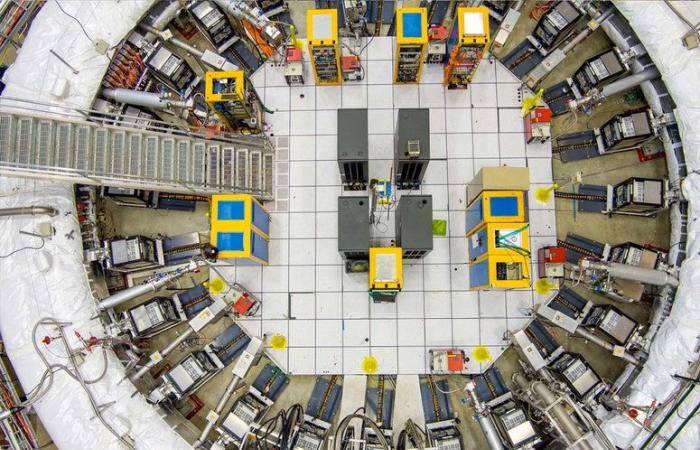What makes NAUM possible is the use of technology developed at high-energy research centers like Fermilab, which are used to detect elementary particles. This project, explains García, is a matter of technological advancement. The devices they use are silicon photomultipliers, which are small, require little energy and can withstand extreme humidity and temperature conditions.
Temple of Kukulkan, Chichen Itza, MexicoGeography Photos/Getty Images
The detector made in Mexico looks like a three-lid club sandwich and is much smaller than the one used in Teotihuacan. When a muon passes through any lid of the detector, it leaves a signal that reveals its trajectory. The coordinates of each muon are stored as numbers in a computer. “When you have millions of these, you start to see an image. The analysis is going to be quite fast, it is done as they are detected. In fact, at the entrance of the tunnel there is a computer that transmits the captured data to Chicago and UNAM,” Menchaca explains.
The detector will be installed inside the tunnel. The first thing will be to locate the known cameras to confirm that they work; Afterwards, they will look for other density changes. Archaeologists will guide their search according to the information generated by physicists. Each measure takes several months.
It happens 20 years later with new technology
García Solís was a student of Menchaca and had dreamed of the NAUM project for more than a decade. “Now we have the technology to embroider the Chichen Itzá pyramid,” he says. For this experiment, he teamed up with physicist Joseph Sagerer from the Dominican University. In 2020, they obtained funding from the United States National Science Foundation. The $400,000 awarded was used to build the detector, buy materials, and pay the salaries of those who will carry out the exploration at Chichén Itzá.
García contacted Menchaca and his UNAM team, given their experience and representation in Mexico. Other scientists on the project are Austin Harton (Chicago State University), Mark Adams (UIC/Fermilab-QuarkNet), Sten Hansen (Fermilab), Eduardo Pérez de Heredia (Zero Technology), Jose Osorio, Marco Antonio Santos Ramirez (National Institute of Archeology and History – INAH), Azucena Cervantes, Hesiquio Vargas (UNAM) and E. Craig Dukes (University of Virginia). In addition, Menchaca added the engineer Saúl Aguilar and the mechanic Dionisio Conde.
The muon rebellion opens the debate on a fifth fundamental force of the universe
Muons refuse to follow the predictions of the Standard Model of particle physics; Scientists believe they are interacting with unknown forces.
In knowing is the discovery
“Our role is to produce the best possible image, the final results are in the domain of archaeologists,” says the researcher from the Institute of Physics. In the meantime, he finds it exciting to work “in places where the most sophisticated people of those times were.”
García Solís adds that not finding a camera in El Castillo would not be a failure. His attitude is, above all, scientific: “they are simply the facts.” He considers the project fascinating because “we are able to synthesize high-energy physics and detectors for archeology in it. He shows that science and technology can be brought to cultural development.”
—Is it possible to use this technology to see the state of conservation of other archaeological sites and cave systems in the Yucatan Peninsula?
— In principle, yes. If we wanted to investigate a cave system, we could do so, but we would have to place the detector below the system we want to study, or at least at the same level. The particles we use to do the research come from the atmosphere and have to pass through the structure and then go to the detector.
For example, he adds, muon detectors are used in Japan to locate magma flows inside volcanoes; they have also been used to see inside a nuclear reactor in France and to monitor the inside of trucks on borders such as that between Mexico and the United States.







